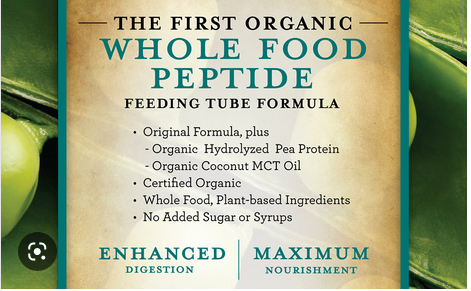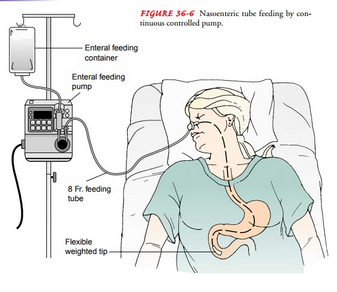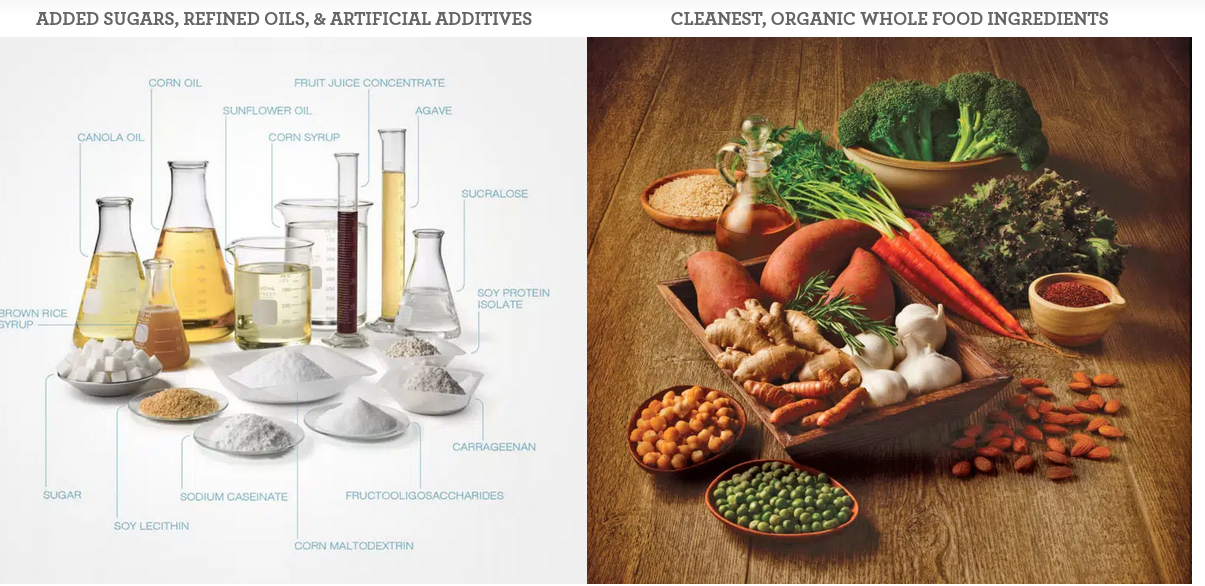Why Choose Organic Enteral Feeding for
At-Home Nutrition Support
When it comes to enteral feeding, choosing organic, whole food-based formulas can make a significant difference in overall health and digestion.
Whether you or a loved one require long-term tube feeding, it's important to explore natural options that align with a clean lifestyle.
What is Enteral Feeding?
While standard formulas are convenient, they often contain synthetic additives, sugars, and preservatives. That’s where organic feeding tube formulas come in—providing nourishment with cleaner, whole-food ingredients.
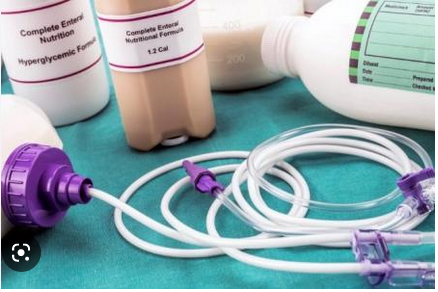
Enteral feeding is the delivery of nutrients directly into the digestive system via a feeding tube. It is often prescribed for individuals who have difficulty eating or swallowing due to medical conditions.
While standard formulas are convenient, they often contain synthetic additives, sugars, and preservatives.
That’s where organic feeding tube formulas come in—providing nourishment with cleaner, whole-food ingredients.
Doctors usually prescribe it if an individual cannot consume enough food to get the necessary nutrients.
If tube feeding takes place at home, it is referred to as Home Enteral Nutrition (HEN).
Enteral feeding can provide essential nutrients and energy for those who require it, and has many benefits including improved nutrition, better health outcomes, and reduced risk of complications.
Click on Video Below for Great and Healthy Alternatives to Feeding Tube Formula:
Go to the Official Website: Functional Formularies
The Benefits of Natural and Organic Tube Feeding Formulas
Switching to organic options for home enteral nutrition offers several health advantages:
- Improved digestion with ingredients that are easier for the body to recognize and process
- Reduced exposure to chemicals and preservatives found in many commercial formulas
- Better nutrient absorption due to whole-food sources
- Support for a cleaner, healthier lifestyle
Organic formulas are especially beneficial for individuals with sensitivities, allergies, or compromised immune systems.
Whole Food Options for
Tube Feeding
Functional Formularies is one such brand offering plant-based, certified organic feeding tube formulas.
Their products use real food ingredients without synthetic vitamins or additives—perfect for patients seeking a more natural path to nutrition.
Some features of high-quality organic feeding formulas include:
- USDA-certified organic ingredients
- No added sugars or preservatives
- Gluten-free, dairy-free, and non-GMO
- Blenderized whole foods
Natural Organic Enteral Feeding (NOEF) is an extremely beneficial form of nutrition for those who are unable to consume regular food.
This type of nutrition is provided through a tube that goes directly into the stomach or small intestine and provides essential vitamins, minerals, proteins and other nutrients needed for proper growth and development.
NOEF also helps reduce risk factors associated with diseases such as diabetes, hypertension, and heart disease.
By providing these benefits, NOEF can improve overall health and quality of life in those who are unable to consume regular food.
Can You Make Homemade Tube Feeding Formulas?
Yes, many caregivers prepare blenderized tube feeding meals at home using fresh, organic ingredients.
This method allows for full control over the diet, although it requires a bit more planning and guidance from a registered dietitian or physician.
If you’re considering this route, it’s important to:
- Ensure nutritional balance
- Use a high-power blender
- Follow safe food handling practices
Functional Formularies for Feeding Tube Alternative Choice
Introducing Liquid Hope from Functional Formularies
The world’s first shelf stable real, whole foods feeding tube formula made from certified organic, plant-based ingredients.
They are so proud to serve patients, care givers, and clinicians around the world with the best nourishment humanly possible to help them thrive.
They strongly believe that real, unprocessed foods are essential for an individual's optimal health.
To ensure the best quality, they always source their ingredients from the most responsible growers.
Their commitment is to provide only organic and real whole food products. Furthermore, they vow to never use any ingredients that can potentially be damaging to human health.
They mission is to create nourishment with the utmost care in order to help people live their fullest lives.
Frequently Asked Questions
What is the best organic enteral feeding formula?
What is the best organic enteral feeding formula?
Brands like Functional Formularies and Liquid Hope are among the top-rated natural alternatives.
Is homemade tube feeding safe?
Is homemade tube feeding safe?
Yes, with proper guidance from a healthcare professional, blenderized diets can be safe and beneficial.
Why avoid standard commercial formulas?
Why avoid standard commercial formulas?
Many contain synthetic ingredients, refined sugars, and additives that may not support long-term health.
More Questions for Enteral Feeding
What are examples of enteral feeding?
What are examples of enteral feeding?
Enteral nutrition is a form of nutrition that is delivered via the gastrointestinal (GI) tract. It can be done through either a normal oral diet, liquid supplements or tube feeding. All these methods help to provide necessary calories and nutrients to the body.
What are the two main methods of enteral feeding?
What are the two main methods of enteral feeding?
Enteral nutrition is the process where food is consumed directly into the stomach or small intestine.
While, parenteral nutrition involves infusing food products through a vein which goes directly into your bloodstream (called PN).
What are the 3 types of feeding tubes?
What are the 3 types of feeding tubes?
Feeding tubes are medical instruments used to deliver nutrients and fluids directly into a patient's digestive tract.
There are three primary types of feeding tubes: Nasogastric Tube (NG Tube), Nasojejunal Tube (NJ Tube), and Percutaneous endoscopic gastrostomy (PEG).
What is an example of enteral administration?
What is an example of enteral administration?
Nasogastric (NG) tubes are a type of tube inserted through the nose into the stomach, typically for short-term feeding purposes.
Alternatively, Percutaneous endoscopic gastrostomy (PEG) tubes are available, which are inserted through the abdominal wall and into the stomach via an opening known as a stoma. These tubes may be used over a longer period of time when necessary.
What are the most common types of feeding tubes?
What are the most common types of feeding tubes?
G-tubes, or Gastrostomy tubes, are commonly used in tube feeding and can be placed surgically or endoscopically.
They provide direct access to the stomach and are typically recommended for people who need tube feeding for more than 3 months.
Is enteral feeding the same as tube feeding?
Is enteral feeding the same as tube feeding?
Yes, it is not possible for you to intake enough nutrients through food, enteral nutrition or tube feeding can be an alternative.
This involves providing nutrition directly to the stomach or small intestine with the help of a doctor's recommendation.
Which is a disadvantage to enteral feeding?
Which is a disadvantage to enteral feeding?
Although enteral feedings can be beneficial, there are some drawbacks too. If a child suffers from gastroesophageal reflux, it can lead to increased aspiration or vomiting risks with aggressive feeding.
Other physical issues that may arise include diarrhea, skin irritation and disruption of anatomy. Potential problems with a mechanical feeding tube include it becoming blocked or dislodged while in use.
When is Enteral Feeding Necessary?
Enteral feeding tubes are medical devices used to provide nutrition to people who cannot eat or drink on their own.
They can be used for both short-term and long-term nutrition supports, depending on the type of tube chosen.
Enteral feeding tubes are medical devices used to provide nutrition to patients who are unable to eat or drink on their own.
These tubes can be inserted through the nose, mouth, or directly into the stomach or intestine.
Depending on the type of tube used and the patient's needs, enteral feeding tubes can provide a variety of nutritional benefits including improved digestion and absorption of nutrients.
The next article will discuss the different types of enteral feeding tubes available and their associated benefits.
Understanding the Different Types of Enteral Feeding Tubes & Their Benefits
There are many different types of enteral feeding tubes, such as
- nasogastric (NG) tubes
- gastrojejunostomy (GJ) tubes
- nasojejunal (NJ) tubes
Nasogastric (NG) tubes, gastrojejunostomy (GJ) tubes, and nasojejunal (NJ) tubes are commonly used for medical treatments such as enteral nutrition, gastric lavage, or medications.
- A NG tube is a feeding tube that is inserted through the nose and reaches the stomach. It can be replaced at home with proper instruction from hospital staff.
- An NJ tube, on the other hand, goes through the nose and into the small intestine, which cannot be done at home.
- A GJ tube is a specialized feeding tube that is inserted surgically into the stomach, allowing for the administration of nutrition, liquids, medication and providing an outlet for gas to escape. It's becoming a popular choice amongst those who require additional help with their nutrition and medication needs.
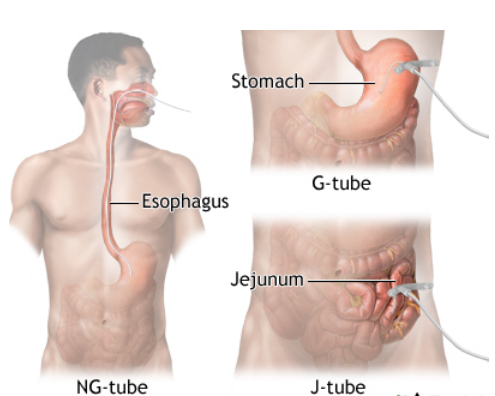 Types of Enteral Feeding Tubes
Types of Enteral Feeding TubesWhat are the Benefits?
These tubes are inserted through the nose and pass down to the stomach or intestine.
They allow for direct access to the digestive system in order to provide nutrition, remove waste from the stomach or intestines, and administer medications in a controlled manner.
Each type of tube has its own unique applications depending on what is required by the patient.
Each enteral feeding tube has its own specific uses and benefits.
Why Is Enteral Feeding Essential for Delivering Optimal Nutrition?
In this article, we will discuss why enteral feeding or feeding tube is essential for delivering optimal nutrition and the benefits associated with home enteral nutrition delivery.
Enteral nutrition therapy is a form of nutrition that is delivered directly into the gastrointestinal tract.
It is an important part of delivering optimal nutrition to those who are unable to eat or digest food normally.
This type of therapy has many benefits, including providing necessary nutrients, improving quality of life, and reducing the risk of infection.
Home enteral nutrition delivery has become increasingly popular as it allows for more flexibility in terms of timing and convenience.
Minimize Complications of
Enteral Feeding at Home
In this article, we will discuss how to administer enteral feeding at home and minimize potential complications.
A feeding tube is a medical device that is used for those who cannot take nutrition orally. It is an essential piece of medical equipment for such patients and can help provide the vital nourishment that their bodies need.
Despite their various benefits, there exist risks associated with these devices that must be taken into consideration.
We will cover topics such as proper preparation, safety guidelines, monitoring techniques and tips for ensuring optimal nutrition.
Patients with feeding tubes are at risk for such complications as aspiration, tube mal-positioning or dislodgment, re-feeding syndrome, medication-related complications, fluid imbalance, insertion-site infection, and agitation. To identify these problems, thoroughly assess the patient before tube feeding is inserted.
It is essential for healthcare practitioners to comprehend the potential concerns for patient safety and risks associated with feeding tubes and take appropriate steps to mitigate them.
Remember You Do Have a Choice

Final Thoughts: Nourishment with Purpose
Choosing organic enteral feeding options is more than a dietary choice—it's a step toward better health, sustainability, and mindful living.
Whether you’re using a prepared formula or creating your own, clean nutrition can help you or your loved one thrive.
Related Pages:
Thank you for visiting my page: Enteral Feeding and the Alternatives
Also, check out Healthy Alternatives and What is Enteral Feeding?
